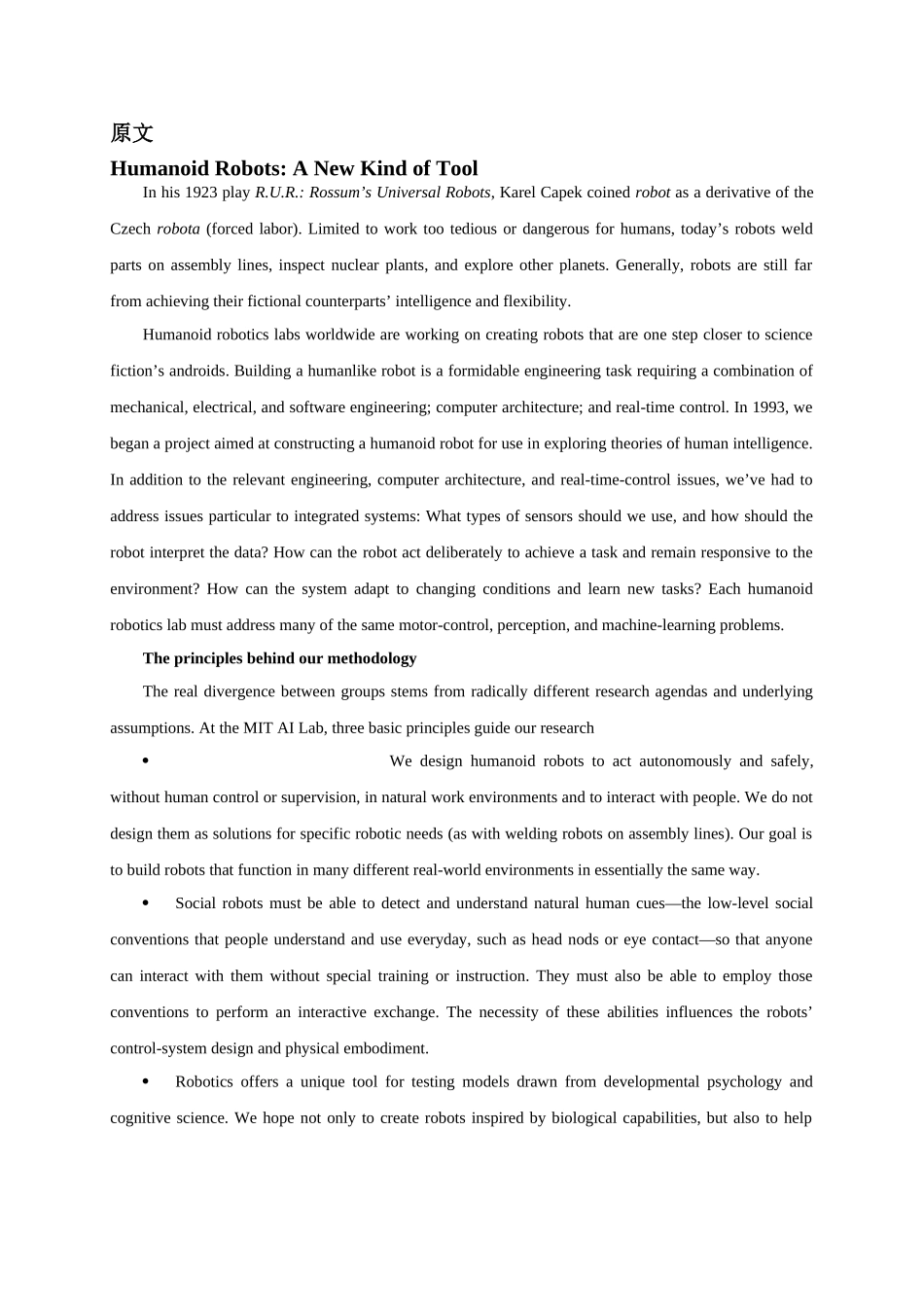本 科 毕 业 设 计(论文)( 2025 届)(外 文 翻 译)题 目: 搬运工业机器人转台的设计 分 院: 机械工程系 专 业: 机械设计制造及其自动化 班 级: 2 姓 名: 学 号: 1 指导老师: 原文Humanoid Robots: A New Kind of ToolIn his 1923 play R.U.R.: Rossum’s Universal Robots, Karel Capek coined robot as a derivative of the Czech robota (forced labor). Limited to work too tedious or dangerous for humans, today’s robots weld parts on assembly lines, inspect nuclear plants, and explore other planets. Generally, robots are still far from achieving their fictional counterparts’ intelligence and flexibility.Humanoid robotics labs worldwide are working on creating robots that are one step closer to science fiction’s androids. Building a humanlike robot is a formidable engineering task requiring a combination of mechanical, electrical, and software engineering; computer architecture; and real-time control. In 1993, we began a project aimed at constructing a humanoid robot for use in exploring theories of human intelligence. In addition to the relevant engineering, computer architecture, and real-time-control issues, we’ve had to address issues particular to integrated systems: What types of sensors should we use, and how should the robot interpret the data? How can the robot act deliberately to achieve a task and remain responsive to the environment? How can the system adapt to changing conditions and learn new tasks? Each humanoid robotics lab must address many of the same motor-control, perception, and machine-learning problems.The principles behind our methodologyThe real divergence between groups stems from radically different research agendas and underlying assumptions. At the MIT AI Lab, three basic principles guide our research...


